Themed collection Environmental Science: Nano Recent HOT Articles

Sustainable synthesis: natural processes shaping the nanocircular economy
This perspective aims to shed light on the transformative potential of sustainable synthesis in guiding the transition towards circular economy conceptions in the nanotechnology domain.
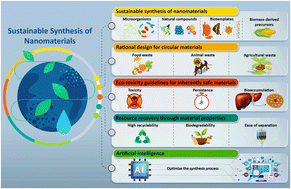
Environ. Sci.: Nano, 2024,11, 688-707
https://doi.org/10.1039/D3EN00973D
Recycling and repurposing of waste carbon nanofiber polymers: a critical review
Carbon nanofibers are a class of lightweight, high-performance composite materials.

Environ. Sci.: Nano, 2024,11, 1394-1411
https://doi.org/10.1039/D3EN00784G
Understanding the active sites and associated reaction pathways of metal-free carbocatalysts in persulfate activation and pollutant degradation
Environmental remediation based on peroxomonosulfate- and peroxydisulfate-activation-enabled radical/non-radical oxidation has gained growing interest due to the strong oxidation power, long life of reactive oxygen species, and wide pH adaptability.

Environ. Sci.: Nano, 2024,11, 1368-1393
https://doi.org/10.1039/D3EN00988B
Applications of bismuth-based nanoparticles for the removal of pollutants in wastewater: a review
This review discusses the characteristics and synthesis methods of Bi-based NPs. It delves into the removal efficiency in wastewater, emphasizing traditional/emerging strategies to enhance the performance, mechanisms, toxicology, and challenges.

Environ. Sci.: Nano, 2024,11, 1332-1367
https://doi.org/10.1039/D3EN00983A
Degradation of organic contaminants by peroxymonosulfate activated with zeolitic imidazolate framework-based catalysts: performances, mechanisms and stability
ZIF-based catalysts have great potential for PMS activation in environmental treatment. State of the art and prospects in recent breakthroughs are presented in this review.
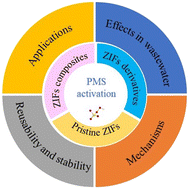
Environ. Sci.: Nano, 2023,10, 1528-1552
https://doi.org/10.1039/D3EN00007A
Photocatalytic and photoelectrocatalytic degradation of perfluorooctanoic acid by immobilised ZnO nanoparticles using electrophoretic deposition
This research represents the first study of perfluorooctanoic acid (PFOA) decomposition using immobilized ZnO nanoparticles by electrophoretic deposition in photocatalysis and photoelectrocatalysis.

Environ. Sci.: Nano, 2023,10, 1955-1965
https://doi.org/10.1039/D3EN00241A
Environmentally friendly InP quantum dots as a visible-light catalyst for water treatment
In this study, we demonstrate the first successful application of InP quantum dots (QDs) as an environmentally friendly visible light photocatalyst for water treatment.

Environ. Sci.: Nano, 2023,10, 1749-1753
https://doi.org/10.1039/D3EN00158J
Single liquid aerosol nano-impact electrochemistry: accessing the droplet|air interface
Fabrication of a dual-barrel platinum ultramicroelectrode allows for the stochastic detection of a single liquid aerosol droplet. The new measurement technique has significant potential for studying the microdroplet|air interface using electrochemistry.

Environ. Sci.: Nano, 2023,10, 1744-1748
https://doi.org/10.1039/D3EN00156C
Multifunctional and asymmetrically superwettable Janus membrane for all-day freshwater harvesting
An asymmetrically superwettable Janus membrane utilizes natural resources without CO2 emission for all-day freshwater harvesting.
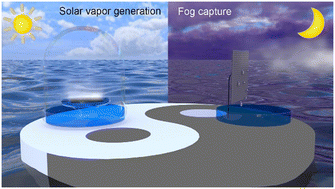
Environ. Sci.: Nano, 2023,10, 996-1002
https://doi.org/10.1039/D2EN01099B
Atmospheric emissions of Ti-containing nanoparticles from industrial activities in China
Our study presents an atmospheric inventory of Ti-containing NPs from industrial sources, highlighting environmental risks and informing strategies for pollution control and public health protection.

Environ. Sci.: Nano, 2024,11, 3816-3825
https://doi.org/10.1039/D4EN00347K
Low-cost iron nanoparticles for remediation of agricultural pollution: adsorption of herbicides bromoxynil and paraquat
Green synthesis of 10 nm zero-valent iron nanoparticles (ZVI-NPs) and incorporation into a polymer membrane offers a promising solution for removal of herbicides, bromoxynil and paraquat. 100% removal was achieved in 18–25 mins with 0.1 mg ZVI-NPs.

Environ. Sci.: Nano, 2024,11, 3774-3789
https://doi.org/10.1039/D3EN00835E
Self-cycled photocatalytic Fenton system and rapid degradation of organic pollutants over magnetic 3D MnS nanosheet/iron–nickel foam
The self-cycled photocatalytic Fenton system rapidly degrades organic pollutants containing real wastewater.

Environ. Sci.: Nano, 2024,11, 3802-3815
https://doi.org/10.1039/D4EN00452C
Synthesis of N-doped porous carbon derived from biomass waste for activating peroxymonosulfate in water decontamination: mechanism insight and biotoxicity assessment
Herein, a series of N-doped carbon nanomaterials were synthesized by the pyrolysis of biomass waste and various nitrogen sources for sulfamethoxazole degradation via peroxymonosulfate activation.

Environ. Sci.: Nano, 2024,11, 3790-3801
https://doi.org/10.1039/D4EN00481G
Highly selective capture and efficient concentration of trace titanium dioxide nanoparticles in environmental waters by phosphorylated ferroferric oxide
Selectively and efficiently capturing trace titanium dioxide nanoparticles (TiO2NPs) in environmental waters is a prerequisite for their determination to understand their occurrence, behavior and effects in the environment.

Environ. Sci.: Nano, 2024,11, 2541-2549
https://doi.org/10.1039/D4EN00095A
Unravelling mechanisms of CaO nanoparticle-induced drought tolerance in Brassica napus: an analysis of metabolite and nutrient profiling
Nanotechnology has been widely used in agriculture to improve plant growth and stress tolerance.

Environ. Sci.: Nano, 2024,11, 2550-2567
https://doi.org/10.1039/D4EN00080C
A new mechanism for visible light photocatalysis: generation of intraband by adsorbed organic compounds with wide-bandgap semiconductors
A novel mechanism has been revealed by the study that the adsorption of VOC molecules on the surface of semiconductors formed midgap states between the ground state of the VOCs and the conduction band of the semiconductor.

Environ. Sci.: Nano, 2024,11, 2415-2427
https://doi.org/10.1039/D4EN00151F
Enhanced flushing mechanism of petroleum hydrocarbon contaminated sandy soil by air nano bubbles
The NBs have the best removal rate of petroleum hydrocarbon pollutants in porous media under weakly alkaline condition (pH = 7–8). Both strong acidity and strong alkalinity are not conducive to the flushing removal of pollutants.

Environ. Sci.: Nano, 2024,11, 2494-2506
https://doi.org/10.1039/D4EN00004H
Combined effect of Cu0 and oxygen vacancies in Cu-based zeolites enables highly efficient photo-Fenton-like performance for water purification
A novel environment-friendly oxygen-vacancy-rich Cu-doped zeolite decorated with Cu0 (Cu0@CuZ) was fabricated to achieve the high-efficiency removal of refractory organic pollutants in a photo-Fenton-like reaction.

Environ. Sci.: Nano, 2024,11, 2481-2493
https://doi.org/10.1039/D4EN00181H
Crystallinity regulation-induced organic degradation on ultra-thin 2D Co3O4/SiO2 nanosheets: the critical trigger of oxygen vacancies
The crystallinity of ultrathin Co3O4 nanosheet was tuned by adjusting the calcination atmosphere. The enriched oxygen vacancies, PMS-binding affinity and rapid Co2+/Co3+ conversion triggered both radical and nonradical reactions for SMX oxidation.

Environ. Sci.: Nano, 2024,11, 2507-2520
https://doi.org/10.1039/D4EN00134F
Functional silver-based nanomaterials affecting zebrafish development: the adverse outcomes in relation to the nanoparticle physical and chemical structure
The green and safe polymer HEC confers bio-interactive properties to Ag-Nps that, together with the small size and positive ζ potential, increase their biological reactivity towards zebrafish embryos.

Environ. Sci.: Nano, 2024,11, 2521-2540
https://doi.org/10.1039/D3EN00813D
Anatase TiO2 nanomaterials are much more effective in enhancing hydrolysis of organophosphorus compounds than their rutile counterparts
The crystalline phase significantly affects the efficiency of TiO2 nanomaterials in catalyzing hydrolysis reactions of organophosphates, primarily by modulating the surface Lewis acidity of TiO2.
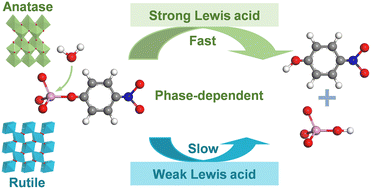
Environ. Sci.: Nano, 2024,11, 2447-2456
https://doi.org/10.1039/D4EN00138A
Zeolite-like ion-exchanged Cu-attapulgite catalysts for promoted selective oxidation of ammonia
Zeolite-like ion-exchanged Cu-attapulgite catalysts have been developed for selective catalytic oxidation of ammonia.
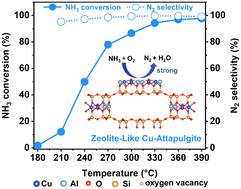
Environ. Sci.: Nano, 2024,11, 2457-2466
https://doi.org/10.1039/D4EN00157E
Facile fabrication of a Z-scheme g-C3N5/Gd-MOF/silver nanocube composite as a new generation visible light active photocatalyst for abatement of persistent toxic pollutants
A ternary composite by combining g-C3N5 and Gd-MOF adorned with AgNCs has been fabricated for the efficient reduction of Cr6+ and neomycin degradation.

Environ. Sci.: Nano, 2024,11, 2467-2480
https://doi.org/10.1039/D3EN00913K
Nano-pelargonidin modulates p53/PARP/HSP 90/XRCC1 signaling axis to combat cypermethrin-induced genotoxicity and metabolic dysfunction in fish: a molecular docking predicted in vivo approach
Nano-pelargonidin protects CM-induced toxicity in tilapia fish by modulating DNA repair proteins corroborating with molecular docking study.

Environ. Sci.: Nano, 2024,11, 2397-2414
https://doi.org/10.1039/D3EN00965C
Magnetic and structural characteristics associated with the transformation of As(V)-coprecipitated ferrihydrite to hematite: implications for magnetic enhancement in soils and sediments
The transformation of metastable ferrihydrite to stable hematite has been linked to magnetic enhancement in soils and sediments.

Environ. Sci.: Nano, 2024,11, 1985-1999
https://doi.org/10.1039/D3EN00739A
Interfacial catalytic degradation mechanism of n-hexane over polyhedral Co3O4 nanocatalysts derived from topotactic condensation of ZIF-67
A progressive transition from the L–H model to MvK model is observed, where a polyhedral Co3O4 nanocatalyst enabled by topotactic condensation of ZIF-67 is synthesized for catalytic degradation of n-hexane.
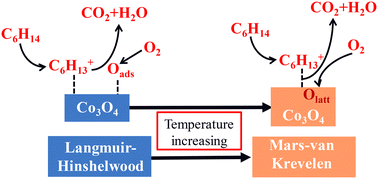
Environ. Sci.: Nano, 2024,11, 2000-2009
https://doi.org/10.1039/D4EN00101J
Regulating the type of nitrogen to improve the performance of Co–N/C with a confinement effect in peroxymonosulfate activation for the effective degradation of organic pollutants
Three Co–N/C-based catalysts with different types of nitrogen are prepared and employed to activate peroxymonosulfate for tetracycline degradation.
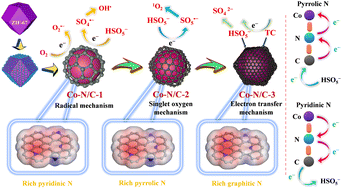
Environ. Sci.: Nano, 2024,11, 2010-2020
https://doi.org/10.1039/D4EN00145A
Carbon nanotubes as a nanocatalyst and nanoreactor for the efficient treatment of pharmaceutical wastewater via CaSO3 activation
Herein, carbon nanotubes (CNTs) are reported as an efficient catalyst and nanoreactor for activating CaSO3 for water decontamination.

Environ. Sci.: Nano, 2024,11, 1978-1984
https://doi.org/10.1039/D4EN00026A
Regulating water decontamination and food safety by a reusable, nano-sized MOF@cotton@chitosan composite through nanomolar detection of the drug nitroxinil and organoarsenic feed additive p-arsanilic acid
MOF@cotton@chitosan composite for nanomolar fluorescence sensing of nitroxinil drug and p-arsanilic acid in real samples is presented.

Environ. Sci.: Nano, 2024,11, 1967-1977
https://doi.org/10.1039/D4EN00066H
A novel CuAl2O4/MoS2/BaFe12O19 magnetic photocatalyst simultaneously coupling type I and Z-scheme heterojunctions for the sunlight-driven removal of tetracycline hydrochloride
A novel CuAl2O4/MoS2/BaFe12O19 photocatalyst is synthesized that simultaneously couples type I and Z-scheme heterojunctions and exhibits high photocatalytic activity for the degradation of TC under simulated sunlight irradiation.

Environ. Sci.: Nano, 2024,11, 1948-1966
https://doi.org/10.1039/D3EN00970J
Selective perfluorooctanoic acid (PFOA) and perfluorooctane sulfonate (PFOS) adsorption by nanoscale zero-valent iron (nZVI): performance and mechanisms
This study investigated the adsorption of PFOA and PFOS by nanoscale zero-valent iron, revealing the adsorption mechanism and enriching the understanding of environmental remediation.

Environ. Sci.: Nano, 2024,11, 1915-1925
https://doi.org/10.1039/D3EN00987D
Constructing a core–shell Pt@MnOx/SiO2 catalyst for benzene catalytic combustion with excellent SO2 resistance: new insights into active sites
The construction of a core–shell Pt@MnOx/SiO2 protective structure catalyst can protect the active Pt site well from SO2 toxicity.

Environ. Sci.: Nano, 2024,11, 1926-1947
https://doi.org/10.1039/D4EN00071D
Selective metal recovery by mucin: turning gold from wastewater into a peroxymonosulfate-activated catalyst
This study explores mucin's ability to selectively recover gold (Au) from metal wastewater. The Au, in the form of a nanoparticle, was utilized in peroxymonosulfate activation for the degradation of bisphenol A.

Environ. Sci.: Nano, 2024,11, 1487-1498
https://doi.org/10.1039/D3EN00699A
Co-transport of ferrihydrite–organic matter colloids with Sb(V) in saturated porous media: implications for antimony mobility
Schematic diagram of the mechanism of Fe–NOM–Sb(V) colloids formation and transport in the natural environment.

Environ. Sci.: Nano, 2024,11, 1462-1476
https://doi.org/10.1039/D3EN00701D
Ecotoxicity testing of nanomaterials in sediment – suggestions to improve science and regulation
Sediments generally act as a sink of released manufactured nanomaterials (NMs).

Environ. Sci.: Nano, 2024,11, 1477-1486
https://doi.org/10.1039/D3EN00459G
Mixing mechanisms of lead nanoparticles with mineral particles: implication of atmospheric transportation of lead
Lead nanoparticles rapidly mix with sand and dust (SD) particles to form mixed particles during SD storms period and have significant potential to be transported by SD particles in atmosphere.

Environ. Sci.: Nano, 2024,11, 1452-1461
https://doi.org/10.1039/D3EN00805C
Preparation of UV-responsive hydrogels based on nanocellulose and their utilization in fungicide delivery
A stimuli-responsive hydrogel for fungicide delivery based on UV-sensitive molecular (AZO)-conjunct CNCs is successfully prepared.

Environ. Sci.: Nano, 2024,11, 1442-1451
https://doi.org/10.1039/D3EN00910F
Quantitatively differentiating foliar adhesion and absorption of different lead-based particles on Solanum melongena L.
This study quantitatively distinguished foliar adhesion and absorption between Pb nano- and submicron particles of different chemical forms.

Environ. Sci.: Nano, 2024,11, 1417-1428
https://doi.org/10.1039/D3EN00640A
A multi-technique analysis of gelatin biodegradation on the surface of core–shell nanoparticles by Alteromonas macleodii extracellular proteases
Multi-technique characterization at the nanoscale of gelatin biodegradation on the surface of core–shell nanoparticles by extracellular proteases.

Environ. Sci.: Nano, 2024,11, 1429-1441
https://doi.org/10.1039/D3EN00523B
Different sulfidized procedures and sulfur precursors alter the bacterial toxicity of sulfidized nanoscale zero-valent iron by affecting the physicochemical properties
Different sulfidized procedures and sulfur precursors influenced the bacterial toxicity of S-NZVI and the mechanisms.

Environ. Sci.: Nano, 2024,11, 870-880
https://doi.org/10.1039/D3EN00899A
Enhanced plasmid-mediated conjugative transfer of resistance genes across bacterial species promoted by graphene oxide
We analyzed the plasmid-mediated transfer frequency between Gram-negative and Gram-positive bacteria at different GO concentrations to unveil its impact on conjugative transfer of ARGs.

Environ. Sci.: Nano, 2024,11, 831-845
https://doi.org/10.1039/D3EN00951C
Green synthesis of a potential magnetic and mesoporous EG-nZVI/CA-MCM41 nanocomposite for reductive sorption of europium
The ability of the EG-nZVI/CA-MCM-41 nanocomposite to eliminate Eu(III) was evaluated by thermodynamic, pHZPC, speciation, kinetics analysis, adsorption isotherm, and recyclability tests, which yielded a high Eu(III) sorption capacity of 714.28 mg g−1.

Environ. Sci.: Nano, 2024,11, 855-869
https://doi.org/10.1039/D3EN00785E
Similarity of multicomponent nanomaterials in a safer-by-design context: the case of core–shell quantum dots
Concepts of similarity applied to complex multicomponent advanced materials for an informed balance of performance and hazard.
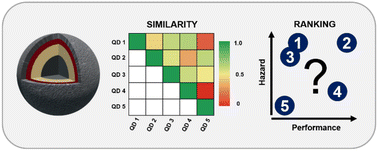
Environ. Sci.: Nano, 2024,11, 924-941
https://doi.org/10.1039/D3EN00338H
Particulate matter exposure may increase the risk of irritable bowel syndrome: a large-scale prospective study based on the UK Biobank
Long-term exposure to PM10 and PM2.5 increases the risk of IBS, especially PM2.5.

Environ. Sci.: Nano, 2024,11, 846-854
https://doi.org/10.1039/D3EN00650F
Magnetite precipitation approach for zinc hydrometallurgy: a microfluidic strategy
Microfluidic technology can be used to enhance magnetite precipitation and Fe–Zn separation, as it offers the advantage of enhanced mixing and mass transfer.

Environ. Sci.: Nano, 2024,11, 819-830
https://doi.org/10.1039/D3EN00696D
Predicting the phytotoxic mechanism of action of LiCoO2 nanomaterials using a novel multiplexed algal cytological imaging (MACI) assay and machine learning
This work uses novel high-throughput phenotypic profiling techniques to elucidate the most probable phytotoxic mechanism of action of LiCoO2 nanosheets.

Environ. Sci.: Nano, 2024,11, 507-517
https://doi.org/10.1039/D3EN00629H
Stability of Ti3C2Tx MXenes in engineered environments
MXenes are a newer class of 2D materials with desirable properties, making them attractive for various environmental applications, including remediation and as membranes for water treatment.
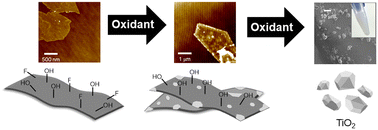
Environ. Sci.: Nano, 2024,11, 494-506
https://doi.org/10.1039/D3EN00438D
Understanding the reaction mechanisms of nicotinamide adenine dinucleotide (NADH) with lithium cobalt oxide and other metal oxide nanomaterials
Biomolecules that have both redox capability and phosphate functionality undergo direct surface initiated redox with high-valent metal oxide nanoparticles, oxidizing the molecule and increasing Co release from the nanoparticles.

Environ. Sci.: Nano, 2024,11, 518-528
https://doi.org/10.1039/D3EN00351E
Toxicity of particles and chemicals released from surgical face masks to the model aquatic organism Daphnia magna
The use of single-use face masks during the COVID-19 pandemic has resulted in indiscriminate disposal of face masks, some of which end up in the aquatic environment.

Environ. Sci.: Nano, 2024,11, 546-560
https://doi.org/10.1039/D3EN00343D
Modifying soluble NPK release with hydrophobized nanocellulose-based hydrogels for sustainable enhanced efficiency fertilizers
Introduction of a hydrophobic shell to a regenerated cellulose-based bead through gas-phase esterification results in slowing of plant nutrient release by an order of magnitude.

Environ. Sci.: Nano, 2024,11, 529-545
https://doi.org/10.1039/D3EN00306J
Synergistic dispersion and biodegradation of oil in seawater based on Janus nanosheets and oil-degrading bacteria
Janus nanosheets synergistically interact with oil-degrading bacteria for marine oil spill remediation.

Environ. Sci.: Nano, 2024,11, 123-135
https://doi.org/10.1039/D3EN00580A
S-doping Fe–Ce composites derived from PBA to accelerate Fe(III)/Fe(II) cycle in the Fenton-like process
S doping promoted the conversion of Fe(III) to Fe(II), which greatly improved the performance of the Fenton-like reaction.

Environ. Sci.: Nano, 2024,11, 103-112
https://doi.org/10.1039/D3EN00788J
A novel route for microplastic mineralization: visible-light-driven heterogeneous photocatalysis and photothermal Fenton-like reaction
A synergic mode of heterogeneous photocatalysis and photothermal Fenton-like reaction for highly efficient microplastic degradation, utilizing α-Fe2O3 nanoflower on TiO2 with a hierarchical structure of inverse opal-like layer/nanotube arrays.

Environ. Sci.: Nano, 2024,11, 113-122
https://doi.org/10.1039/D3EN00642E
Environmental safety of nanocellulose: an acute in vivo study with marine mussels Mytilus galloprovincialis
The growing application of nanocellulose in various industrial sectors with potential release into the natural environment demands a safety assessment and thus ecotoxicity.

Environ. Sci.: Nano, 2024,11, 61-77
https://doi.org/10.1039/D3EN00135K
Facile synthesis of surface-functionalized fluorescent carbon quantum dots for the selective detection of ferric ions
Biomass-derived carbon quantum dots are gaining a lot of attention from contemporary world because of their fascinating physical, chemical and electronic properties which bestowed them excellent water solubility, low cytotoxicity, good biocompatibility and high photostability.

Environ. Sci.: Nano, 2023,10, 3281-3294
https://doi.org/10.1039/D3EN00376K
Rational design of active sites in alumina-based catalysts to optimize antibonding-orbital occupancy for tetrafluoromethane decomposition
Tetrafluoromethane (CF4) is a potent greenhouse gas with high stability, thus its effective decomposition is crucial for mitigating its environmental impact.

Environ. Sci.: Nano, 2023,10, 3307-3316
https://doi.org/10.1039/D3EN00473B
Chitosan nanocarriers loaded with salicylic acid for controlling fall armyworm (Spodoptera frugiperda) and alleviating oxidative stress in maize plants
Foliar spraying with SA–CS nanocomposites (SCNs) significantly increased maize plant resistance against S. frugiperda by increasing defense compound (BX) production and anti-insect gene (Pep1, RIP2, MPI and JAR1a) expression.

Environ. Sci.: Nano, 2023,10, 3295-3306
https://doi.org/10.1039/D3EN00532A
Reduction in insect attachment ability by biogenic and non-biogenic ZnO nanoparticles
ZnO-nanoparticles reduce the attachment ability of the green stinkbug Nezara viridula, a major pest worldwide, by aggregating on insect attachment devices. These findings can help to develop nontoxic pest-control methods that can be alternatives to insecticides.

Environ. Sci.: Nano, 2023,10, 3062-3071
https://doi.org/10.1039/D3EN00545C
Investigation of magnetite–Co interactions: from environmentally relevant trace Co levels to core–shell Fe3O4@Co(OH)2 nanoparticles with magnetic applications
Three different Co(II) species are identified at the surface of stoichiometric magnetite (Fe(II)/Fe(III) = 0.5) by experiments, modeling, X-ray absorption spectroscopy, and X-ray magnetic circular dichroism. This affects the fate of Co, and the magnetic properties of the nanoparticles.
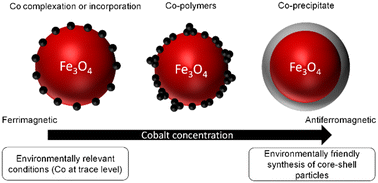
Environ. Sci.: Nano, 2023,10, 3051-3061
https://doi.org/10.1039/D3EN00379E
Insights into efficient bacterial inactivation over nano Ag/graphdiyne: dual activation of molecular oxygen and water molecules
This work revealed the dual activation mechanism of O2 and H2O on nano Ag/GDY and the excellent antibacterial efficiency.

Environ. Sci.: Nano, 2023,10, 3072-3083
https://doi.org/10.1039/D3EN00480E
Targeted delivery of oxytetracycline to the epidermal cell junction and stomata for crop protection
A micronutrient-based nanosystem was utilized to target the delivery of oxytetracycline to the stomata and epidermal cell junctions. The findings have potential to significantly improve crop protection against surface-restricted pathogens.

Environ. Sci.: Nano, 2023,10, 3012-3024
https://doi.org/10.1039/D3EN00140G
Mechanism of catalytic ozonation in different surface acid sites of oxide aqueous suspensions
Proposed mechanism of catalytic ozonation in different surface acid sites of oxide aqueous suspensions.

Environ. Sci.: Nano, 2023,10, 2312-2323
https://doi.org/10.1039/D3EN00331K
Functionalized boron nitride nanosheets conjugated with plant micronutrients as seed dressing agents towards control of bacterial wilt disease
A novel strategy for bacterial wilt disease control was proposed involving boron nitride nanosheets to immobilize plant micronutrients and form a defensive barrier in plant roots to block or inhibit the invasion of pathogen.

Environ. Sci.: Nano, 2023,10, 2343-2358
https://doi.org/10.1039/D3EN00173C
Sustainable and scalable development of PVDF-OH Ag/TiOx nanocomposites for simultaneous oil/water separation and pollutant degradation
Freshwater scarcity remains a global challenge, often exacerbated by oil contamination. The current study tackles this issue by cleaning oily wastewater while removing its dissolved organic pollutants with PVDF-OH Ag/TiOx sustainable nanocomposites.

Environ. Sci.: Nano, 2023,10, 2359-2373
https://doi.org/10.1039/D3EN00335C
Comparing the inhibitory effects of CuO-rGO, CuO NPs, and CuCl2 on the oomycete Phytophthora sojae: insights from phenotypic and transcriptomic analyses
The antibacterial mechanism involves inducing oxidative stress, resulting in disruptions to the mycelial cell membrane, intracellular structure, and various metabolic processes.

Environ. Sci.: Nano, 2023,10, 2299-2311
https://doi.org/10.1039/D3EN00363A
Selective tandem electroreduction of nitrate to nitrogen via copper–cobalt based bimetallic hollow nanobox catalysts
The hollow Cu–Co HNB catalyst selectively reduces NO3− to N2 by tandem catalysis in a chlorine-free system.

Environ. Sci.: Nano, 2023,10, 2332-2342
https://doi.org/10.1039/D3EN00403A
Hierarchical structured Cu@carbon/carbon cloth film with high levels of light absorption for efficient solar thermal desalination
A novel hierarchical structured Cu@carbon/carbon cloth film is developed for highly-efficient interfacial solar steam generation.
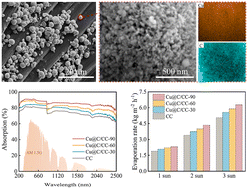
Environ. Sci.: Nano, 2023,10, 2324-2331
https://doi.org/10.1039/D3EN00252G
Graphene oxide degradation by a white-rot fungus occurs in spite of lignin peroxidase inhibition
Graphene oxide can be degraded by ubiquitous fungal enzymes alternative to lignin peroxidase, inhibited by the nanomaterial.

Environ. Sci.: Nano, 2023,10, 2286-2298
https://doi.org/10.1039/D3EN00072A
Silicon quantum dots promote radish resistance to root herbivores without impairing rhizosphere microenvironment health
Soil-applied silicon quantum dots (Si QDs) significantly increased radish taproot resistance against white grubs and simultaneously shaped a healthy rhizosphere microenvironment.

Environ. Sci.: Nano, 2023,10, 2232-2244
https://doi.org/10.1039/D3EN00368J
Charged nanoplastics differentially affect the conjugative transfer of antibiotic resistance genes
The transfer of antibiotic resistance genes was influenced by the concentration and surface charge of nanoplastics. This was due to a combination of the promotion effect of ROS and the inhibition caused by nanoplastic agglomeration.

Environ. Sci.: Nano, 2023,10, 2273-2285
https://doi.org/10.1039/D3EN00229B
About this collection
Here is a collection of recent Environmental Science: Nano articles which have been classified as ‘HOT articles’ due to receiving particularly high scores at peer review.